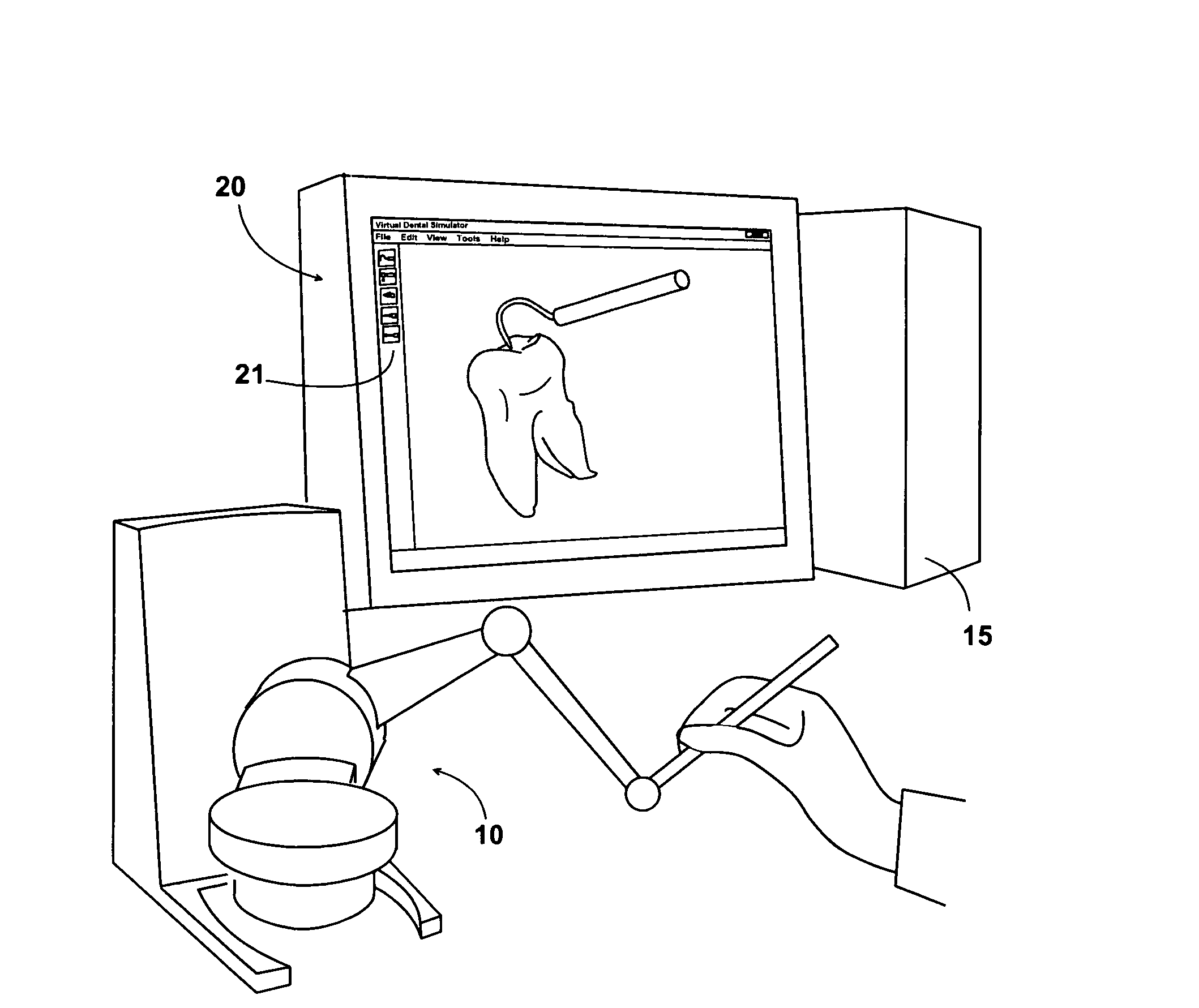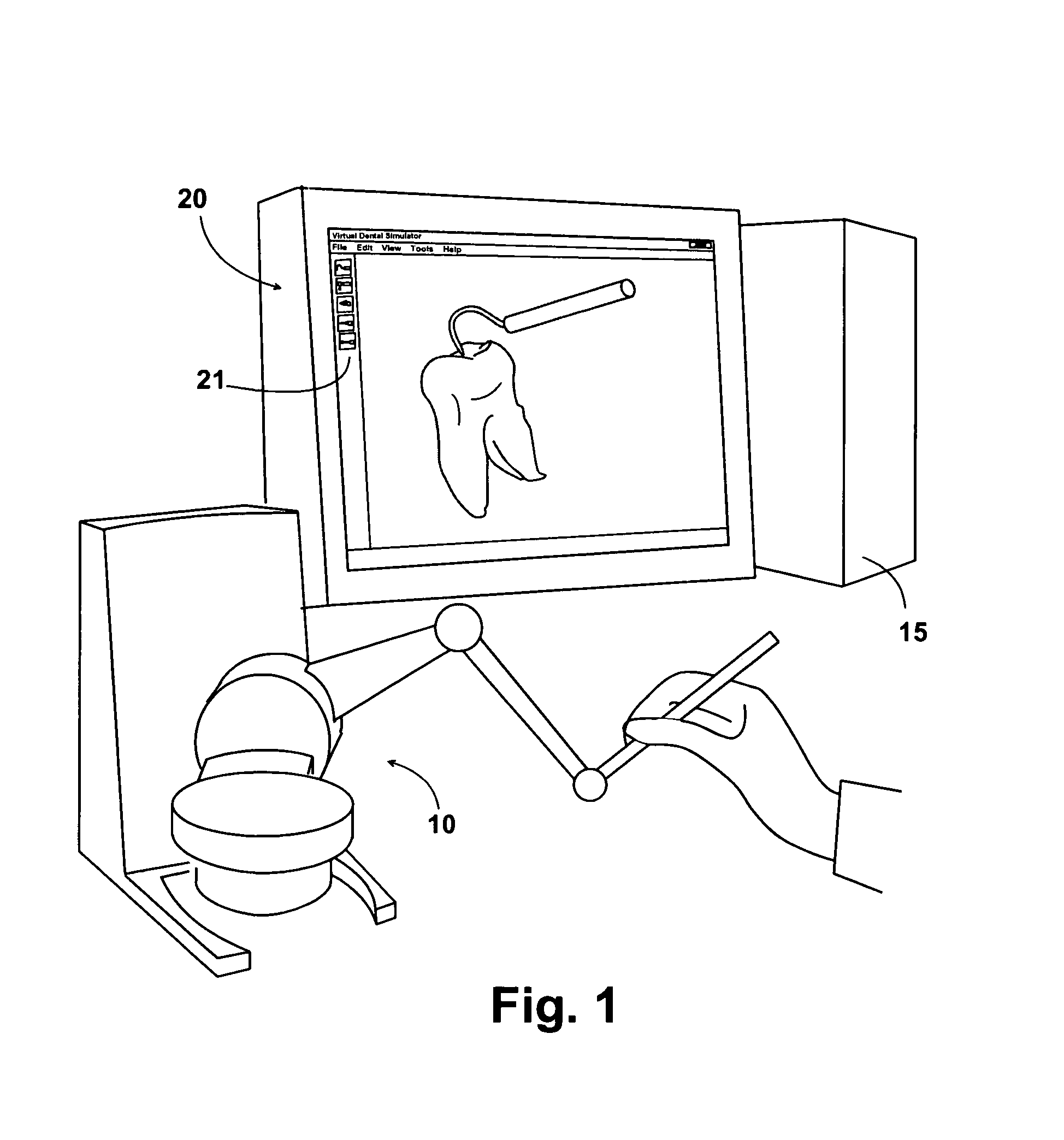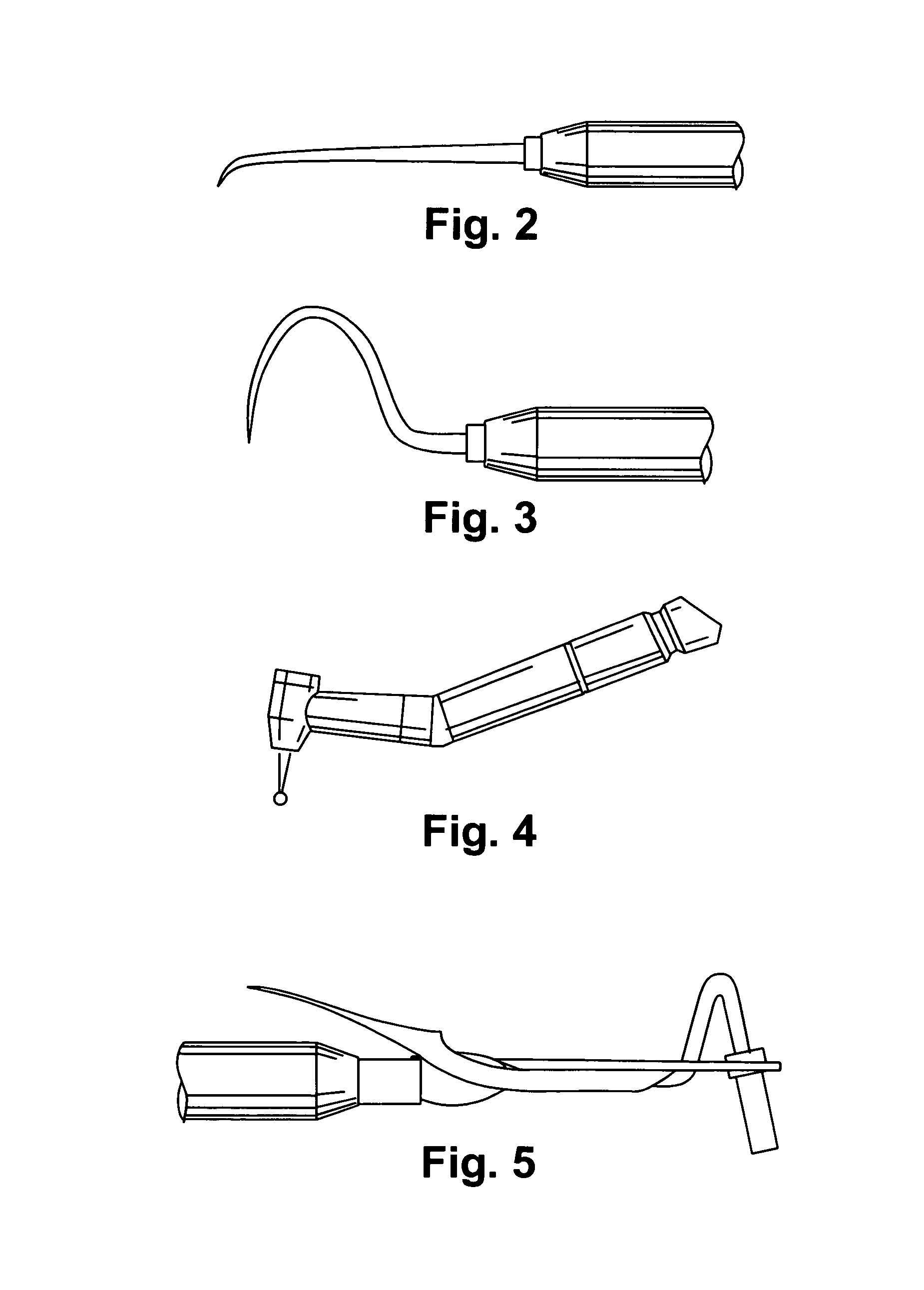Methods and apparatus for simulating dental procedures and for training dental students
a dental student and simulation technology, applied in the field of virtual reality systems, can solve the problems of difficult instillation or maintenance of standards, lack of detail and material properties of dental models to exactly mirror real-life teeth and procedures, and obvious less than optimal
- Summary
- Abstract
- Description
- Claims
- Application Information
AI Technical Summary
Benefits of technology
Problems solved by technology
Method used
Image
Examples
Embodiment Construction
[0029]The preferred embodiment of the invention is a Virtual Reality Dental Training System (VRDTS) illustrated in FIG. 1 which utilizes the PHANTOM™ haptic interface device 10 connected to a conventional computer or workstation 15. The PHANTOM™ haptic interface is available from SensAble Technologies, Inc. of Woburn, Mass., and is described in U.S. Pat. No. 5,898,599 entitled “Force reflecting haptic interface,” issued on Apr. 27, 1999 to Thomas H. Massie and J. K. Salisbury, the disclosure of which is hereby incorporated herein by reference, and in “The PHANTOM Haptic Interface: A Device for Probing Virtual objects” by Thomas H. Massie and J. K. Salisbury, Proceedings of the ASME Winter Annual Meeting, Symposium on Haptic Interfaces for Virtual Environment and Teleoperator Systems, Chicago, Ill., November 1994. The PHANTOM™ interface provides a broad range of workspace, stiffness and motor force, provides a passive three degrees of freedom positional measurement, and includes a po...
PUM
 Login to View More
Login to View More Abstract
Description
Claims
Application Information
 Login to View More
Login to View More - R&D
- Intellectual Property
- Life Sciences
- Materials
- Tech Scout
- Unparalleled Data Quality
- Higher Quality Content
- 60% Fewer Hallucinations
Browse by: Latest US Patents, China's latest patents, Technical Efficacy Thesaurus, Application Domain, Technology Topic, Popular Technical Reports.
© 2025 PatSnap. All rights reserved.Legal|Privacy policy|Modern Slavery Act Transparency Statement|Sitemap|About US| Contact US: help@patsnap.com



